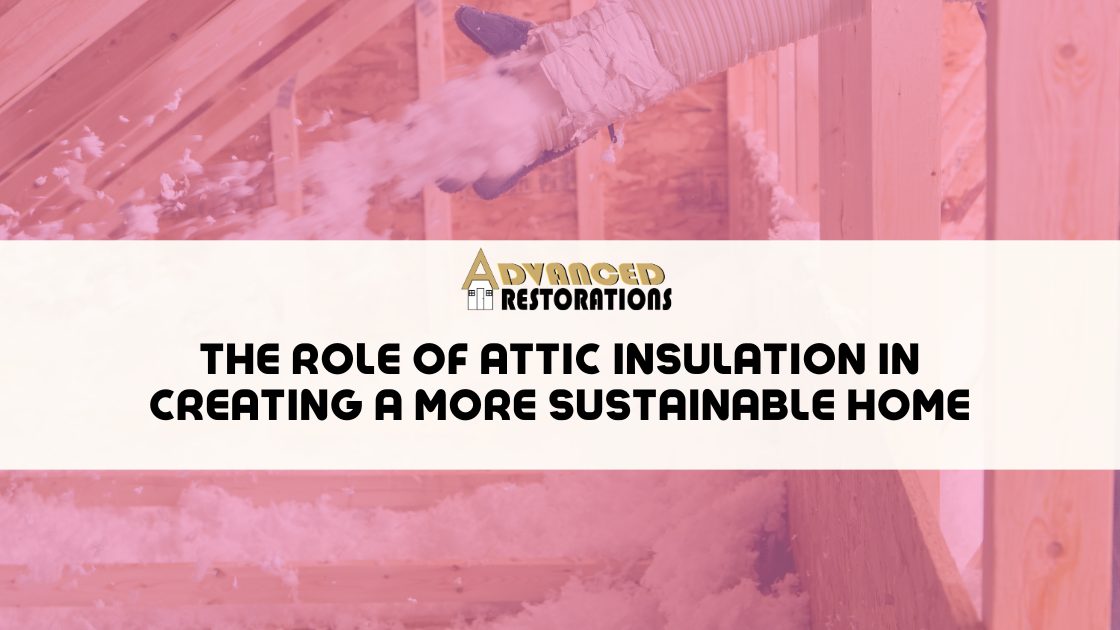
The Role of Attic Insulation in Creating a More Sustainable Home
When it comes to making your home more sustainable and energy-efficient, one of the most important improvements you can make is ensuring that your attic insulation is up to par. Proper attic insulation, especially blown-in insulation, is essential for regulating your home’s temperature, improving energy efficiency, and reducing heating and cooling costs. With the right insulation, your home becomes more comfortable year-round while also minimizing your environmental footprint.
In this article, we’ll explain how attic insulation works to create a more sustainable home and how blown-in insulation is particularly effective at improving your home’s energy performance.
How Attic Insulation Works to Keep Your Home Comfortable
The attic is one of the primary places where heat enters your home during the summer and escapes during the winter. Without proper insulation, your home’s temperature can fluctuate dramatically, causing your heating and cooling systems to work overtime to maintain a comfortable indoor climate.
Attic insulation acts as a barrier that helps to regulate temperature by preventing heat transfer. In the summer, it keeps the cool air inside and blocks the hot air from entering, while in the winter, it prevents warm air from escaping, keeping your home cozy and energy-efficient. This regulation not only makes your home more comfortable but also reduces the need for constant heating and cooling, which lowers your energy consumption and carbon footprint.
Blown-In Insulation: A Perfect Fit for Attics
At Advanced Restorations, we specialize in blown-in insulation, a highly effective and energy-efficient option for attic insulation. Here’s why blown-in insulation is one of the best choices for improving home sustainability:
- Even Coverage: Unlike traditional batt or roll insulation, blown-in insulation fills every nook and cranny in your attic. It is blown into place using a special machine, ensuring a uniform layer that covers all gaps, corners, and hard-to-reach areas. This comprehensive coverage ensures that no part of your attic is left vulnerable to heat loss or gain.
- Improved Energy Efficiency: Blown-in insulation works by creating an airtight barrier that prevents heat from passing through the attic. This reduces the load on your heating and cooling systems, helping them run more efficiently. The result is lower energy bills and a more energy-efficient home, especially during extreme temperatures.
- Easy to Apply and Maintain: Blown-in insulation is easy to install and can be added over existing insulation, making it a great option for homes with older or settled insulation. Since it doesn’t need to be replaced frequently, it offers long-lasting energy savings without requiring constant upkeep.
Sustainability Benefits of Proper Attic Insulation
Proper attic insulation is one of the most effective ways to make your home more sustainable and eco-friendly. Here are some key benefits of investing in high-quality attic insulation, like blown-in insulation:
- Reduced Heating and Cooling Costs: By preventing heat from entering your home in the summer and escaping in the winter, insulation helps maintain a consistent indoor temperature. This reduces the amount of energy needed to heat or cool your home, leading to lower utility bills and reducing your overall energy consumption.
- Decreased Environmental Impact: Using less energy means burning fewer fossil fuels, which helps lower your carbon footprint and reduces your home’s impact on the environment. Sustainable insulation like blown-in insulation ensures that your home stays energy-efficient without relying heavily on non-renewable resources.
- Improved Indoor Comfort: A well-insulated attic not only helps with temperature control but also contributes to better air quality and comfort inside your home. By preventing temperature fluctuations and moisture buildup, insulation creates a more consistent and pleasant living environment.
Blown-In Insulation vs. Other Insulation Options
There are several types of attic insulation, but blown-in insulation offers distinct advantages over other options:
- Traditional Batt Insulation: While batt insulation can be effective, it often leaves gaps and doesn’t always fit well in the irregular spaces in your attic. Over time, batt insulation can also settle, reducing its effectiveness. Blown-in insulation fills these gaps and doesn’t settle, providing better long-term insulation.
- Spray Foam Insulation: While spray foam provides excellent air sealing, it can be more expensive and requires professional installation. Blown-in insulation offers a more cost-effective solution that still provides great coverage and energy efficiency.
Signs Your Home Needs Better Insulation
If you’re unsure whether your attic insulation is performing as it should, here are some signs that you may need to upgrade or replace your insulation:
- High Energy Bills: If your cooling and heating costs are higher than normal, it may be due to insufficient attic insulation. Poor insulation allows heat to enter or escape your home, making it harder for your HVAC system to maintain a comfortable temperature.
- Uneven Temperatures: If certain rooms in your home are significantly warmer or cooler than others, this could indicate poor insulation in the attic.
- Ice Dams or Roof Leaks: In winter, inadequate insulation can lead to ice dams, which form when warm air from the attic melts snow on the roof, causing water to refreeze at the eaves. Proper insulation prevents heat from reaching the roof, reducing the likelihood of ice dams and potential roof damage.
Schedule Your Consultation for Blown-In Insulation
At Advanced Restorations, we specialize in blown-in insulation, a simple and effective way to enhance the energy efficiency and sustainability of your home. If you’re ready to make your home more comfortable and eco-friendly, schedule a consultation today. Our experts will assess your attic’s insulation needs and recommend the best solution for reducing your energy consumption and lowering your utility bills.
